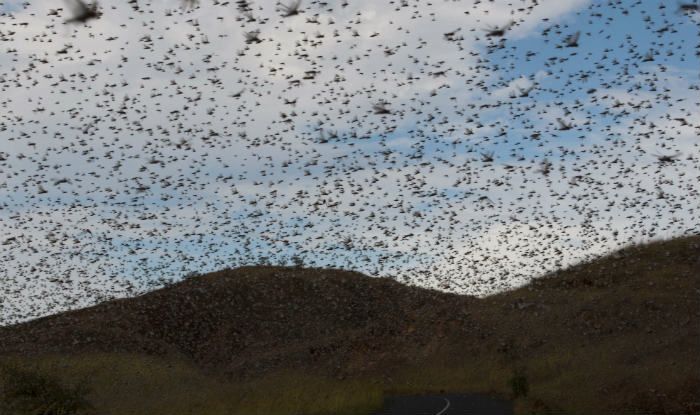
Be Aware of Locust Swarm as Air Intake Ports Can be Blocked: DGCA Issues Notice to Pilots
As locusts are found at lower levels, pilots have been asked to be alert during landing and take off. If locusts block air intake ports, there can be erroneous indications.
New Delhi: Four days after domestic flights resumed operations in India following a gap of two months, a new security issue has cropped up in front of the aviation sector thanks to locus swarms invading states after states at a rapid speed. Also Read - Zaira Wasim Leaves Twitter And Instagram After Controversial Tweet Justifying Locust Attacks by Using a Verse From Holy Quran
Aviation regulator DGCA on Friday has issued guidelines for stakeholders like pilots and engineers on how to deal with locust swarms, saying they pose a threat to aircraft in the critical landing and takeoff phase of a flight. Also Read - Police Vans in MP Blow Sirens, Farmers in Rajasthan Bang Utensils To Scare Away Locusts | Watch
India is battling the worst desert locust invasion in more than 21 years. The crop-destroying swarms first attacked Rajasthan and have now spread to Punjab, Gujarat, Maharashtra and Madhya Pradesh. Also Read - Don't Let Locusts Rest at Night, Delhi Government Issues Advisory | 10 Points
“Generally, locusts are found at lower levels and therefore pose a threat to aircraft in the critical landing and takeoff phase of the flight. Almost all air intake ports of the aircraft will be prone to ingestion in large numbers if the aircraft flies through a swarm (areas like engine inlet, air-conditioning pack inlet etc.),” the regulator said in its circular.
The Directorate General of Civil Aviation said that pitot and static sources can also get partially or fully blocked while flying through locust swarms. “Blocked pitot and static sources lead to erroneous instrument indications, especially unreliable airspeed and altimeter indications,” it said.
A pitot tube in aeroplanes is used to measure the flow speed of the wind.
For breaking news and live news updates, like us on Facebook or follow us on Twitter and Instagram. Read more on Latest India News on India.com.
Comments - Join the Discussion